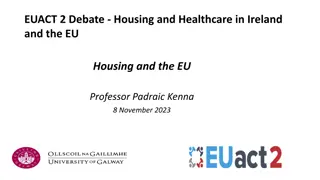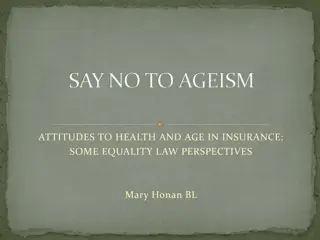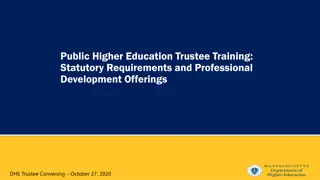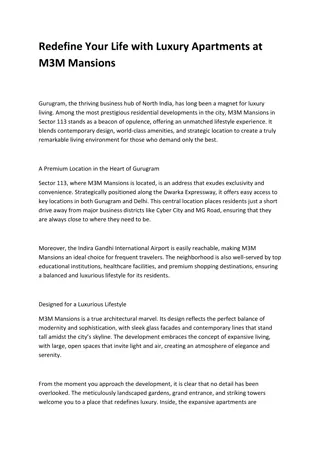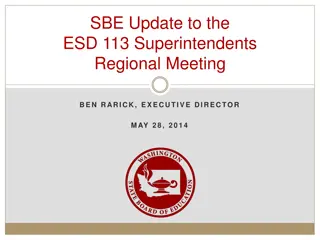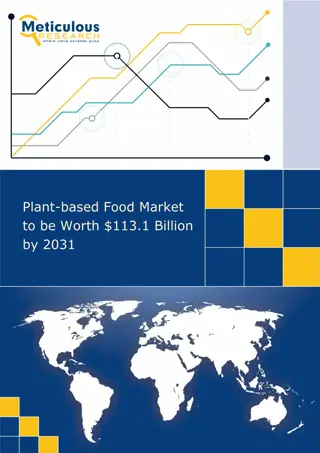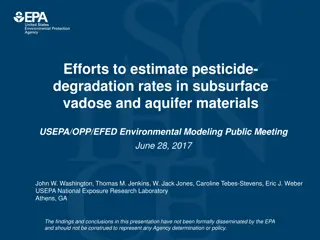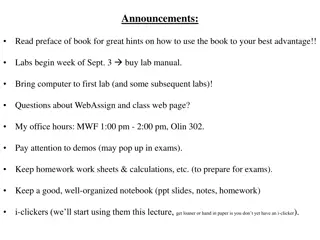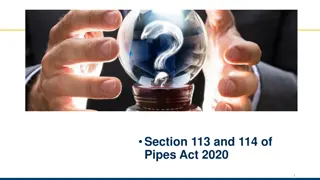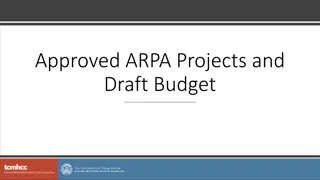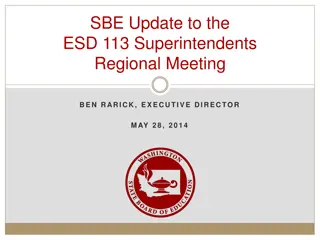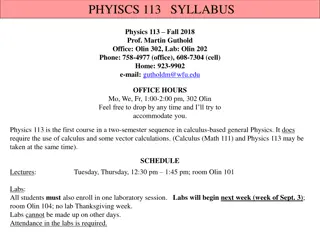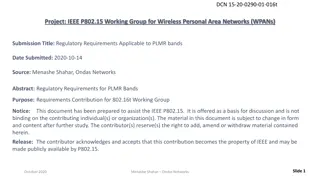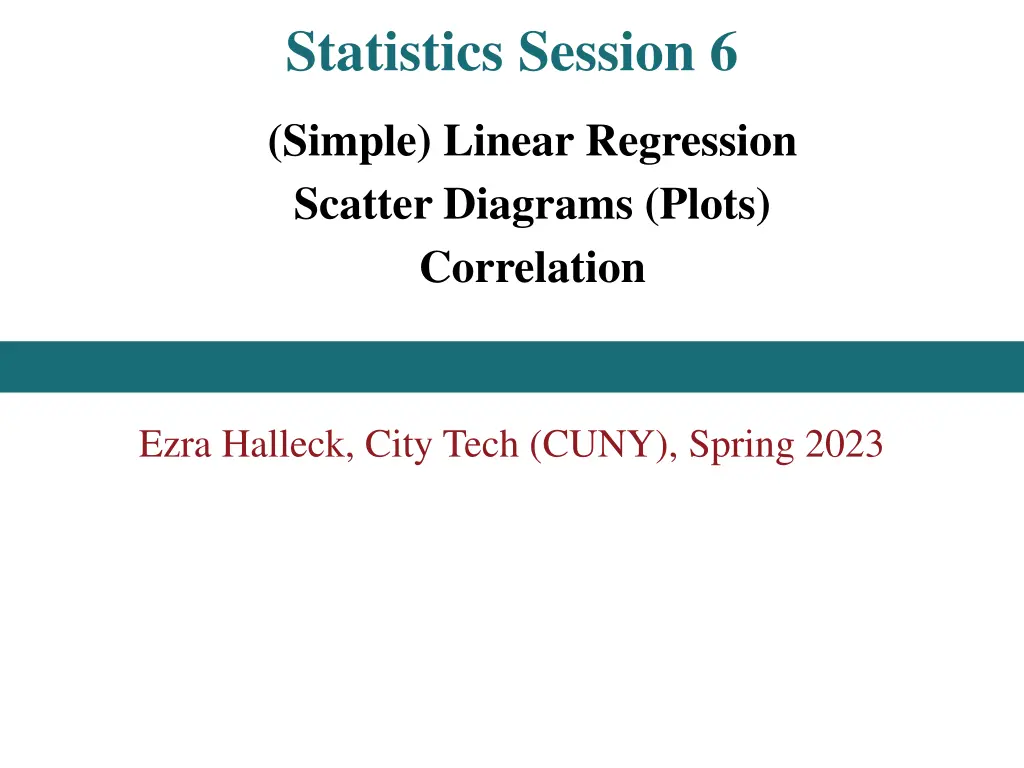
Linear Regression and Scatter Diagrams
Explore the concepts of simple linear regression, scatter diagrams, and the relationship between variables with practical examples. Understand the parameters, calculations, and interpretations of data in a regression model. Visualize the connection between income and food expenditure through scatter diagrams in statistical analysis.
Download Presentation

Please find below an Image/Link to download the presentation.
The content on the website is provided AS IS for your information and personal use only. It may not be sold, licensed, or shared on other websites without obtaining consent from the author. If you encounter any issues during the download, it is possible that the publisher has removed the file from their server.
You are allowed to download the files provided on this website for personal or commercial use, subject to the condition that they are used lawfully. All files are the property of their respective owners.
The content on the website is provided AS IS for your information and personal use only. It may not be sold, licensed, or shared on other websites without obtaining consent from the author.
E N D
Presentation Transcript
Statistics Session 6 (Simple) Linear Regression Scatter Diagrams (Plots) Correlation Ezra Halleck, City Tech (CUNY), Spring 2023
Simple Linear Regression Definition A regression model is a mathematical equation that describes the relationship between two or more variables. A simple regression model includes only two variables: one independent and one dependent. The dependent or response variable is the one being explained. The independent or explanatory variable is one that partially explains the variation in the dependent variable. A model that gives a straight-line relationship between 2 variables is a simple linear regression model. 2
Figure 13.1 Relationship between Food Expenditure and Income. (a) Linear Relationship (b) Nonlinear Relationship 3
Figure 13.2 Plotting a Linear Equation For the example, the slope is 5 and the y-intercept is 50. Note how the x and y scales are different. 4
Simple Linear Regression Model (1 of 2) Definition In the regression modely=A+Bx+ : A is the y-intercept or constant term B is the slope is the random error term. The dependent and independent variables are y and x, respectively. A and B are parameters (data taken from a population). 5
Simple Linear Regression Model (2 of 2) Definition In most situations, the parameters A and B are unknown. In the model and y = a + bx, a sample data and are the estimates of A and B, respectively. We will illustrate the calculations and concepts using this toy data set: We have a pair of observations for each of the seven households. Each pair consists of one observation on income and a second on food expenditure. For example, the first household s income for the last month was $5500 and its food expenditure was $1400. b, are calculated using Income Food Expenditure 55 14 83 24 38 13 61 16 33 9 49 15 67 17 We will use income as the independent variable and food expenditure as the dependent variable. 6
Scatter Diagram Definition A plot of paired observations is called a scatter diagram. Example: Incomes (in hundreds of dollars) and Food Expenditures of Seven Households Income Food Expenditure 55 14 83 24 38 13 61 16 33 9 49 15 67 17 7
Scatter Diagram and Straight Lines Our goal is to find a straight line which goes in between the plotted points; typically, ~ the points will be above and below. Are any of these lines a good fit? Why, why not? 8
Figure 13.6 Best fit line Below is the best fit line. Notice that it does not pass through any of the points (although in general it could). The standard criterion to choose a line is to choose the one that minimizes the sum of the squares of the errors e. 9
Error Sum of Squares (SSE) The error sum of squares, denoted SSE, is ( ) y 2 2 SSE= e = y The values of a and b that give the minimum SSE are called the least square estimates of A and B. The regression line obtained with these estimates is called the least squares line. 10
The Least Squares Line (1 of 2) For the least squares regression line y = a + bx, SS SS xy b = a = y bx and xx where ????= ? ? ? ? and ????= ? ?2 SS stands for sum of squares. Note however that there is no square for SSxy. The formula for ? is associated with the fact that the point ?, ?always lies on the regression line. 11
The Least Squares Line (2 of 2) For the least squares regression line y = a + bx, SS SS xy b = a = y bx and xx where ????= ? ? ? ? and ????= ? ?2 From all those years that you studied algebra: ?2 ?1, so the units for slope are ? units The units for ? are ? units ? units units ? units So, after cancelation, we see that the units for ? are correct. units ? units units. ? =?2 ?1 units. units units ? units units units=? units units ? units ? units units ? units 12
Example 13-1 (1 of 2) We will later use Excel and TI 84 to find the least squares regression line for the data on incomes and food expenditure on the 7 households. But in the meantime, here are the results: 447.5714 .2525 1772.8571 15.4286 .2525 55.1429 a y bx Thus, our estimated regression model is = + 1.5050 .2525 y x Income Food Expenditure SS SS xy b = = = 55 14 xx 83 24 ( )( ) 1.5050 = = = 38 13 61 16 33 9 49 15 67 17 13
Example 13-1 (2 of 2) Income Food Expenditure 55 14 Our estimated regression model is 83 24 38 13 y x 1.5050 .2525 = + 61 16 33 9 49 15 67 17 The interpretation of the results is important: The slope ~1/4 means that if a household acquires $4 additional in income, then they will likely spend ~$1 of it on food. The y-intercept of 1.5 refers to food expenditure with no income, but this is outside of our range and hence is extrapolation, which in general is discouraged. On the other hand, we are free to predict the food expenditure for a family with income within the range of our data, this is called interpolation. For instance, for a household with income of $5000 per month, they are likely to spend ~1.5+.25(50)=12.65 or $1,265 of it on food. 14
Error of Prediction Note that one of our data pairs is (61,16). If we put x = 61 into our model: ? = 1.505+.2525*61 = 16.9075 or $1690.75. Our error is: y ? = 16 16.9075 = 0.9075 or $90.75. Income Food Expenditure 55 14 83 24 38 13 61 16 33 9 49 15 67 17 15
Excel Solution (1 of 2) Food Expen diture x-xb y-yb 14 24 13 -17 16 5.9 0.57 3.347 9 -22 15 -6 17 12 1.57 18.63 (x-xb) (y-yb) Income statistics x mean SS__ 1773 125.71 SSxy 448 b 0.25 SSxy/SSxx a 1.51 yb-b*xb r 0.95 SSxy/ (SSxx*Ssyy) r^2 90% y 55 83 38 61 33 49 67 -0 28 8.57 238.8 -2.4 41.63 -1.4 0.204 55.1 15.429 -6.4 142.3 -0.4 2.633 16
Excel Solution (2 of 2) Food Expenditure vs Income ($100's/mo) 25 23 y = 0.2525x + 1.5073 R = 0.8988 21 19 17 15 13 11 9 30 40 50 60 70 80 90 17
TI 84 solution (1 of 3) Put in the data into L1 and L2 (stat, EDIT) Go to zoom, zoomstat and you will see -> Perform linear regression (stat, CALC, 8). For Store RegEQ: put in vars,Y-VARS, Function Y1 Go to Calculate and press enter to see the values for a and b on the next slide. 18
TI 84 solution (2 of 2) Next, press graph to see the scatter plot now with the regression line. We interpret slope ? 1 if income increases by $4, then on average, the food expenditure increases by $1. 4 as: Using trace, jump from data pair to data pair as they appear in list. 19
TI 84 solution (3 of 3) We calculate the error, the difference between actual and predicted values, for data pair (55,14): Add point (55, Y1(55)) to the list and show the new graph: Note how the actual point is -1.39 units below the predicted point. Point with predicted y-value Point with actual y-value 20
Positive and Negative Linear Relationships Between x and y 21
Assumptions of the Regression Model 1. The random error term has a mean equal to zero for each x. 2. The errors associated with different observations are independent. 3. For any given x, the distribution of errors is normal. 4. The distribution of population errors for each x has the same (constant) standard deviation, which is denoted . 22
13.4 Linear Correlation Linear Correlation Coefficient Hypothesis Testing About the Linear Correlation Coefficient (not covered for now) 24
Linear Correlation Coefficient Linear Correlation Coefficient The simple linear correlation coefficient, denoted by r, measures the strength of the linear relationship between two variables for a sample and is calculated as SS r = SS SS xy xx yy The Roman letter r is for sample data. The Greek letter for r, ? rho , is used for population data. The correlation coefficientalways lies in range 1 to 1: 1 ? 1 and 1 ? 1. 25
Linear Correlation between Two Variables: Extreme examples No correlation, Perfect negative, Perfect positive, 26
Nonextreme Positive Linear Correlations (b) Moderately positive linear correlation (r is around 0.6) 27
Nonextreme Negative Linear Correlations (b) Moderately negative linear correlation (r is around 0.6) 28
Example 13-6 Calculate the correlation coefficient for the example on incomes and food expenditures of seven households. SS xy r = SS SS xx yy 447.5714 = ( )( ) 1772.8571 125.7143 = .9481= .95 ?2, known as the coefficient of determination, is ~90% for this example. It provides an upper bound (maximum) on the portion of the variation in the response variable due to the explanatory variable. Go to earlier Excel work for the sum of squares calculations. 29
TI 84 work for 13.6 (1 of 2) Using the same procedure for the calculations of a and b, you can find you both r and r2. To do so you need to turn the diagnostics on: 1. from the home screen, press [2ND] [CATALOG] 2. in catalog press [ALPHA] [D] to go down to the "D s . 3. scroll down through the list and select the instruction DiagnosticOn 4. press [ENTER] twice: the display should show DONE. 30
TI 84 work for 13.6 (2 of 2) With the data in L1 and L2, Perform linear regression (stat, CALC, 8). Go to Calculate and press enter. Some notes: 1. b and r are always of the same sign, which indicates whether the trend line is upward or downward from left to right. 2. r2 gives an upper bound for how much of the variation in the response variable comes from the explanatory variable. 31
Example 13-8 (1 of 2) A random sample of eight drivers selected from a small town insured with a company and having similar minimum required auto insurance policies was selected. Driving Experience (years) Monthly Auto Insurance Premium ($) 5 64 2 87 12 50 9 71 15 44 6 56 25 42 16 60 32
Example 13-8 (2 of 2) (a) Does the insurance premium depend on the driving experience or does the driving experience depend on the insurance premium? Based on your answer, choose appropriate dependent and independent variables (b) Do you expect a positive or a negative relationship between these two variables? (c) Plot the scatter diagram and the regression line. (d) Find the least squares regression line using the SS formulas. (e) Interpret the meaning of the values of a and b in part d. (f) Calculate r and r2 and interpret. (g) Predict the monthly auto insurance for a driver with 10 years of driving experience. 33
Example 13-8: Solution (a) Based on theory and intuition, we expect the insurance premium to depend on driving experience. The insurance premium is a dependent variable (variable y) The driving experience is an independent variable (variable x) (b) You would hope that the premium will go down as a driver becomes more experienced. However, elderly drivers can cause accidents, so the premium might go up after a certain age. 34
Scatter Diagram and the Regression Line (c) The regression line slopes downward from left to right. 35
Example 13-8: Solution (2 of 3) (d) SS SS 593.5000= 1.5476 383.5000 = 59.25 xy b = = xx bx ( )( ) a = y 1.5476 11.25 = 76.6605 = 76.6605 1.5476 y x 36
Example 13-8: Solution (3 of 3) = a gives the value of y for 76.6605 (e) The value of 0; = x premium for a driver with no driving experience. that is, it gives the monthly auto insurance The value of for every extra year of driving experience, the monthly auto insurance premium decreases by $1.55. indicates that, on average, 1.5476 = b 37
Example 13-8: Solution (1 of 7) (f) SS 593.5000 xy = = = .77 r ( )( ) SS SS xx 383.5000 1557.5000 yy ( )( ) 1.5476 593.5000 SS SS b xy = = = 2 .59 r 1557.5000 yy 38
Example 13-8: Solution (2 of 7) = indicates that the driving r (f) The value of experience and the monthly auto insurance premium are negatively related. The (linear) relationship is moderately strong. 0.77 states that 59% of the total = The value of variation in insurance premiums might be explained by years of driving experience, and 41% for sure is not. 2r 0.59 39
Example 13-8: Solution (3 of 7) (g) Using the estimated regression line, we find the predicted value of y for x = 10 is ( ( ) ) = 76.6605 1.5476 10 = $61.18 y Thus, the monthly auto insurance premium of a driver with 10 years of driving experience should be ~$60. Exercise: Put the data into your calculator and reproduce the results in the slides. 40

